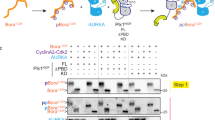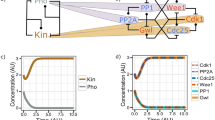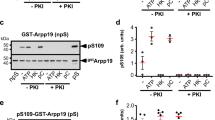Abstract
The Xenopus Polo-like kinase Plx1 plays multiple roles in mitosis. Accumulating evidence shows that Plx1 is the trigger kinase for the G2/M transition that phosphorylates and activates the phosphatase Cdc25C, which subsequently dephosphorylates Cdc2/cyclin B and initiates a positive feedback loop between Cdc25C and Cdc2/cyclin B. Recent findings indicate that Plx1 itself is also in a positive feedback loop. It phosphorylates and activates the protein kinase xPlkk1, which itself then phosphorylates and further activates Plx1. Plx1 functions on the centrosome to promote bipolar spindle formation. Plx1 associates with the anaphase-promoting complex/cyclosome (APC/C) and is required to activate the APC/C for degradation of mitotic regulators required for sister chromatid separation and exit from mitosis. Plx1 is also required for cytokinesis and is localized on the midbody of the contractile ring. All known functions of Plx1 require not only its kinase activity but also an intact polo box domain in the C-terminus.
This is a preview of subscription content, access via your institution
Access options
Subscribe to this journal
Receive 50 print issues and online access
$259.00 per year
only $5.18 per issue
Buy this article
- Purchase on Springer Link
- Instant access to full article PDF
Prices may be subject to local taxes which are calculated during checkout


Similar content being viewed by others
References
Abrieu A, Brassac T, Galas S, Fisher D, Labbe JC and Doree M . (1998). J. Cell Sci., 111 (Part 12), 1751–1757.
Alexandru G, Uhlmann F, Mechtler K, Poupart MA and Nasmyth K . (2001). Cell, 105, 459–472.
Bahler J, Steever AB, Wheatley S, Wang Y, Pringle JR, Gould KL and McCollum D . (1998). J. Cell Biol., 143, 1603–1616.
Brassac T, Castro A, Lorca T, Le Peuch C, Doree M, Labbe JC and Galas S . (2000). Oncogene, 19, 3782–3790.
Carmena M, Riparbelli MG, Minestrini G, Tavares AM, Adams R, Callaini G and Glover DM . (1998). J. Cell Biol., 143, 659–671.
Cheng KY, Lowe ED, Sinclair J, Nigg EA and Johnson LN . (2003). EMBO J., 22, 5757–5768.
Crenshaw DG, Yang J, Means AR and Kornbluth S . (1998). EMBO J., 17, 1315–1327.
Descombes P and Nigg EA . (1998). EMBO J., 17, 1328–1335.
do Carmo Avides M, Tavares A and Glover DM . (2001). Nat. Cell Biol., 3, 421–424.
Donaldson MM, Tavares AA, Ohkura H, Deak P and Glover DM . (2001). J. Cell Biol., 153, 663–676.
Duncan PI, Pollet N, Niehrs C and Nigg EA . (2001). Exp. Cell Res., 270, 78–87.
Dunphy WG and Kumagai A . (1991). Cell, 67, 189–196.
Elia AE, Cantley LC and Yaffe MB . (2003a). Science, 299, 1228–1231.
Elia AE, Rellos P, Haire LF, Chao JW, Ivins FJ, Hoepker K, Mohammad D, Cantley LC, Smerdon SJ and Yaffe MB . (2003b). Cell, 115, 83–95.
Erikson E, Haystead TA, Qian YW and Maller JL . (2004). J. Biol. Chem., 279, 32219–32224.
Golan A, Yudkovsky Y and Hershko A . (2002). J. Biol. Chem., 277, 15552–15557.
Gonzalez C, Saunders RD, Casal J, Molina I, Carmena M, Ripoll P and Glover DM . (1990). J. Cell Sci., 96 (Part 4), 605–616.
Gonzalez C, Sunkel CE and Glover DM . (1998). Chromosoma, 107, 452–460.
Hamanaka R, Smith MR, O'Connor PM, Maloid S, Mihalic K, Spivak JL, Longo DL and Ferris DK . (1995). J. Biol. Chem., 270, 21086–21091.
Hauf S, Waizenegger IC and Peters JM . (2001). Science, 293, 1320–1323.
Hornig NC and Uhlmann F . (2004). EMBO J., 23, 3144–3153.
Hsu JY, Reimann JD, Sorensen CS, Lukas J and Jackson PK . (2002). Nat. Cell Biol., 4, 358–366.
Izumi T and Maller JL . (1991). Mol. Cell. Biol., 11, 3860–3867.
Izumi T and Maller JL . (1993). Mol. Biol. Cell, 4, 1337–1350.
Izumi T and Maller JL . (1995). Mol. Biol. Cell, 6, 215–226.
Jackman M, Lindon C, Nigg EA and Pines J . (2003). Nat. Cell Biol., 5, 143–148.
Jang YJ, Lin CY, Ma S and Erikson RL . (2002a). Proc. Natl. Acad. Sci. USA, 99, 1984–1989.
Jang YJ, Ma S, Terada Y and Erikson RL . (2002b). J. Biol. Chem., 277, 44115–44120.
Kang D, Chen J, Wong J and Fang G . (2002). J. Cell Biol., 156, 249–259.
Karaiskou A, Lepretre AC, Pahlavan G, Du Pasquier D, Ozon R and Jessus C . (2004). Development, 131, 1543–1552.
Kelm O, Wind M, Lehmann WD and Nigg EA . (2002). J. Biol. Chem., 277, 25247–25256.
Kotani S, Tugendreich S, Fujii M, Jorgensen PM, Watanabe N, Hoog C, Hieter P and Todokoro K . (1998). Mol. Cell, 1, 371–380.
Kumagai A and Dunphy WG . (1996). Science, 273, 1377–1380.
Lane HA and Nigg EA . (1996). J. Cell Biol., 135, 1701–1713.
Lee KS and Erikson RL . (1997). Mol. Cell Biol., 17, 3408–3417.
Lee KS, Grenfell TZ, Yarm FR and Erikson RL . (1998). Proc. Natl. Acad. Sci. USA, 95, 9301–9306.
Leung GC, Hudson JW, Kozarova A, Davidson A, Dennis JW and Sicheri F . (2002). Nat. Struct. Biol., 9, 719–724.
Li J, Meyer AN and Donoghue DJ . (1995). Mol. Biol. Cell, 6, 1111–1124.
Lindon C and Pines J . (2004). J. Cell Biol., 164, 233–241.
Liu J, Lewellyn AL, Chen LG and Maller JL . (2004). J. Biol. Chem., 279, 21367–21373.
Liu X and Erikson RL . (2002). Proc. Natl. Acad. Sci. USA, 99, 8672–8676.
Llamazares S, Moreira A, Tavares A, Girdham C, Spruce BA, Gonzalez C, Karess RE, Glover DM and Sunkel CE . (1991). Genes Dev., 5, 2153–2165.
Lorca T, Castro A, Martinez AM, Vigneron S, Morin N, Sigrist S, Lehner C, Doree M and Labbe JC . (1998). EMBO J., 17, 3565–3575.
Losada A, Hirano M and Hirano T . (1998). Genes Dev., 12, 1986–1997.
Losada A, Hirano M and Hirano T . (2002). Genes Dev., 16, 3004–3016.
Losada A, Yokochi T, Kobayashi R and Hirano T . (2000). J. Cell Biol., 150, 405–416.
Lowery DW, Mohammad DH, Elia AE and Yaffe MB . (2004). Cell Cycle, 3, 128–131.
Lu KP, Hanes SD and Hunter T . (1996). Nature, 380, 544–547.
May KM, Reynolds N, Cullen CF, Yanagida M and Ohkura H . (2002). J. Cell Biol., 156, 23–28.
Moshe Y, Boulaire J, Pagano M and Hershko A . (2004). Proc. Natl. Acad. Sci. USA, 101, 7937–7942.
Ohkura H, Hagan IM and Glover DM . (1995). Genes Dev., 9, 1059–1073.
Ouyang B, Li W, Pan H, Meadows J, Hoffmann I and Dai W . (1999). Oncogene, 18, 6029–6036.
Perdiguero E, Pillaire MJ, Bodart JF, Hennersdorf F, Frodin M, Duesbery NS, Alonso G and Nebreda AR . (2003). EMBO J., 22, 5746–5756.
Peter M, Le Peuch C, Labbe JC, Meyer AN, Donoghue DJ and Doree M . (2002). EMBO Rep., 3, 551–556.
Qian YW, Erikson E, Li C and Maller JL . (1998a). Mol. Cell Biol., 18, 4262–4271.
Qian YW, Erikson E and Maller JL . (1998b). Science, 282, 1701–1704.
Qian YW, Erikson E and Maller JL . (1999). Mol. Cell Biol., 19, 8625–8632.
Qian YW, Erikson E, Taieb FE and Maller JL . (2001). Mol. Biol. Cell, 12, 1791–1799.
Reimann JD, Freed E, Hsu JY, Kramer ER, Peters JM and Jackson PK . (2001a). Cell, 105, 645–655.
Reimann JD, Gardner BE, Margottin-Goguet F and Jackson PK . (2001b). Genes Dev., 15, 3278–3285.
Reynolds N and Ohkura H . (2003). J. Cell Sci., 116, 1377–1387.
Rudner AD and Murray AW . (2000). J. Cell Biol., 149, 1377–1390.
Scolnick DM and Halazonetis TD . (2000). Nature, 406, 430–435.
Shen M, Stukenberg PT, Kirschner MW and Lu KP . (1998). Genes Dev., 12, 706–720.
Sigrist SJ and Lehner CF . (1997). Cell, 90, 671–681.
Simizu S and Osada H . (2000). Nat. Cell Biol., 2, 852–854.
Song S and Lee KS . (2001). J. Cell Biol., 152, 451–469.
Sumara I, Vorlaufer E, Gieffers C, Peters BH and Peters JM . (2000). J. Cell Biol., 151, 749–762.
Sumara I, Vorlaufer E, Stukenberg PT, Kelm O, Redemann N, Nigg EA and Peters JM . (2002). Mol. Cell, 9, 515–525.
Sunkel CE and Glover DM . (1988). J. Cell Sci., 89 (Part 1), 25–38.
Tavares AA, Glover DM and Sunkel CE . (1996). EMBO J., 15, 4873–4883.
Toyoshima-Morimoto F, Taniguchi E, Shinya N, Iwamatsu A and Nishida E . (2001). Nature, 410, 215–220.
Uhlmann F . (2001). Curr. Opin. Cell Biol., 13, 754–761.
Uhlmann F . (2004). Exp. Cell Res., 296, 80–85.
Uhlmann F and Nasmyth K . (1998). Curr. Biol., 8, 1095–1101.
Waizenegger IC, Hauf S, Meinke A and Peters JM . (2000). Cell, 103, 399–410.
Wakefield JG, Bonaccorsi S and Gatti M . (2001). J. Cell Biol., 153, 637–648.
Walsh S, Margolis SS and Kornbluth S . (2003). Mol. Cancer Res., 1, 280–289.
Wind M, Kelm O, Nigg EA and Lehmann WD . (2002). Proteomics, 2, 1516–1523.
Yoo HY, Kumagai A, Shevchenko A and Dunphy WG . (2004). Cell, 117, 575–588.
Yuan J, Eckerdt F, Bereiter-Hahn J, Kurunci-Csacsko E, Kaufmann M and Strebhardt K . (2002). Oncogene, 21, 8282–8292.
Zhou XZ, Kops O, Werner A, Lu PJ, Shen M, Stoller G, Kullertz G, Stark M, Fischer G and Lu KP . (2000). Mol. Cell, 6, 873–883.
Acknowledgements
We thank Dr Frank Eckerdt for a critical reading of the manuscript. The work on Plx1 in the authors' laboratory is supported by a grant from the NIH (GM26743-24) and by the Howard Hughes Medical Institute. JL is an Associate and JLM is an Investigator of the Howard Hughes Medical Institute.
Author information
Authors and Affiliations
Corresponding author
Rights and permissions
About this article
Cite this article
Liu, J., Maller, J. Xenopus Polo-like kinase Plx1: a multifunctional mitotic kinase. Oncogene 24, 238–247 (2005). https://doi.org/10.1038/sj.onc.1208220
Published:
Issue Date:
DOI: https://doi.org/10.1038/sj.onc.1208220
Keywords
This article is cited by
-
PLK1 maintains DNA methylation and cell viability by regulating phosphorylation-dependent UHRF1 protein stability
Cell Death Discovery (2023)
-
An updated view on the centrosome as a cell cycle regulator
Cell Division (2022)
-
An ATM- and ATR-dependent checkpoint inactivates spindle assembly by targeting CEP63
Nature Cell Biology (2009)
-
Plx1 is required for chromosomal DNA replication under stressful conditions
The EMBO Journal (2008)



